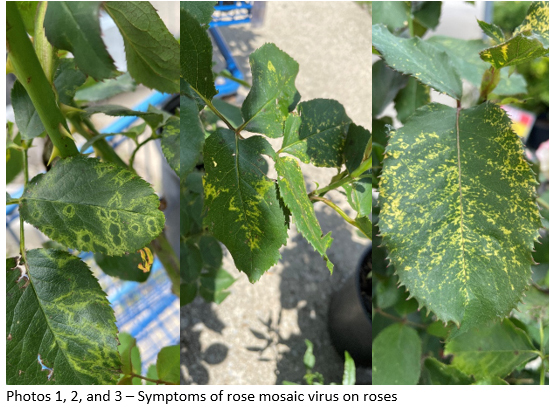
Weekly Review for May 29, 2024
This informal report by the Division of Entomology & Plant Pathology is a commentary on insects, diseases, and curiosities division staff encounter on a week-to-week basis. Comments and questions about this report are welcome and can be sent to your respective Inspector.
Our Website
Inspector Territories
Jared Spokowsky (Nursery Inspetor & Compliance Officer) -
We are short on time but if anyone wants to submit their colony loss data for this year, the Apiary Inspectors of America and Auburn University are doing a colony loss survey. However, it’s only open until Friday, May 31.
Also, anyone interested in using oxalic acid extended-release strips I would encourage you to go to this website. Betterbee is going to be the sole distributor for Varroxsan, an oxalic acid impregnated strip that is labeled for extended use to control Varroa mites.
Kristy Stultz (Nursery Inspector & Compliance Officer) -
There seems to be a lot going on with roses this spring. Several dealer locations have had material showing heavy signs of rose mosaic virus. Symptoms can be variable since there are several viruses that contribute to the disease complex. I don’t remember ever seeing so many different symptoms on the same plant. One mode of transmission is through grafting or budding infected material onto healthy plant stock or vice versa. When receiving stock from any source, take some time to look it over. There’s no easy cure for rose mosaic virus. Sanitation of tools is important to remove the risk of spread to uninfected stock as well.

Eric Biddinger (Nursery Inspector & Compliance Officer) -
There has been all kind of talk about cicadas this year with the co-emergence of Brood XIII (a 17-year brood) and Brood XIX (a 13-year brood), though the ranges of these two broods do not overlap. On top of that, there are reports of some early emergence of Brood XIV (expected in 2025) and Brood XXIII (expected in 2028) occurring. There’s not much going on in my neck of the woods, but on a recent trip to Valparaiso I was blown away by the volume (noise) and volume (quantity) of cicadas.
As far as landscape damage is concerned, cicadas pose the largest risk to small and newly planted trees. While it is a little late to take protective measures such as netting, scouting trees for flagging and other signs of stress should continue throughout the summer, even after the cicada songs have faded away. For more information about all things cicada, visit cicadamania.com.


